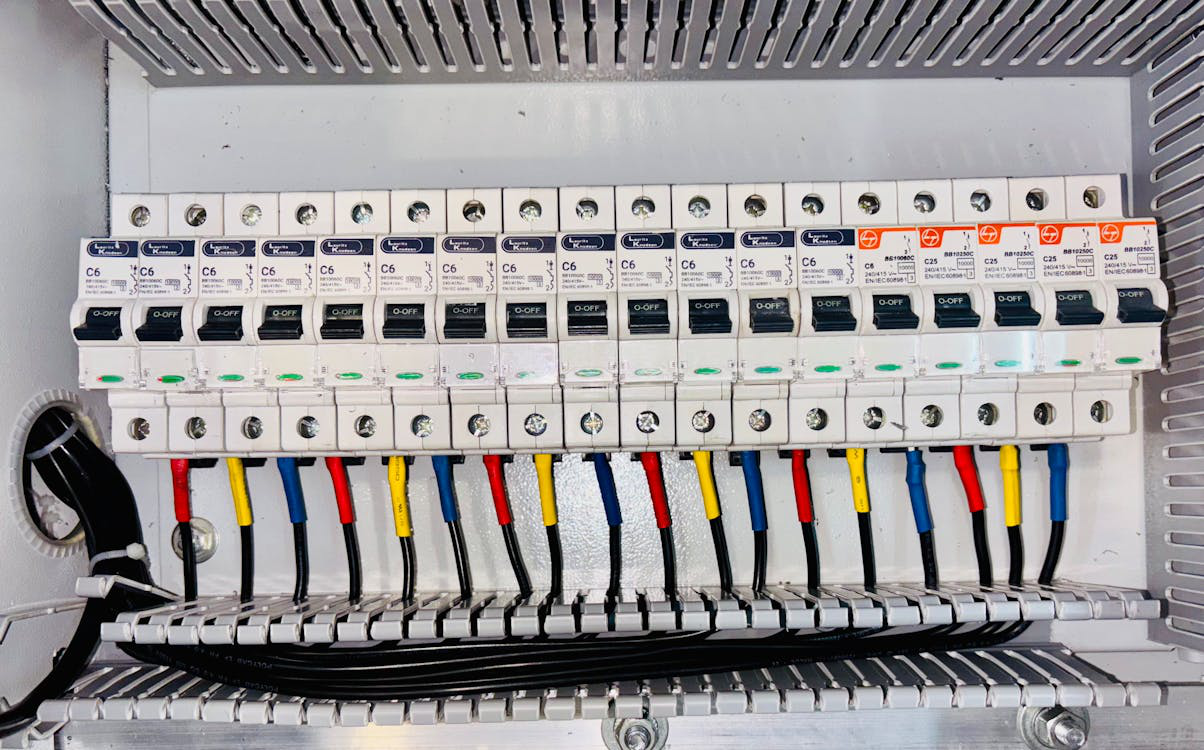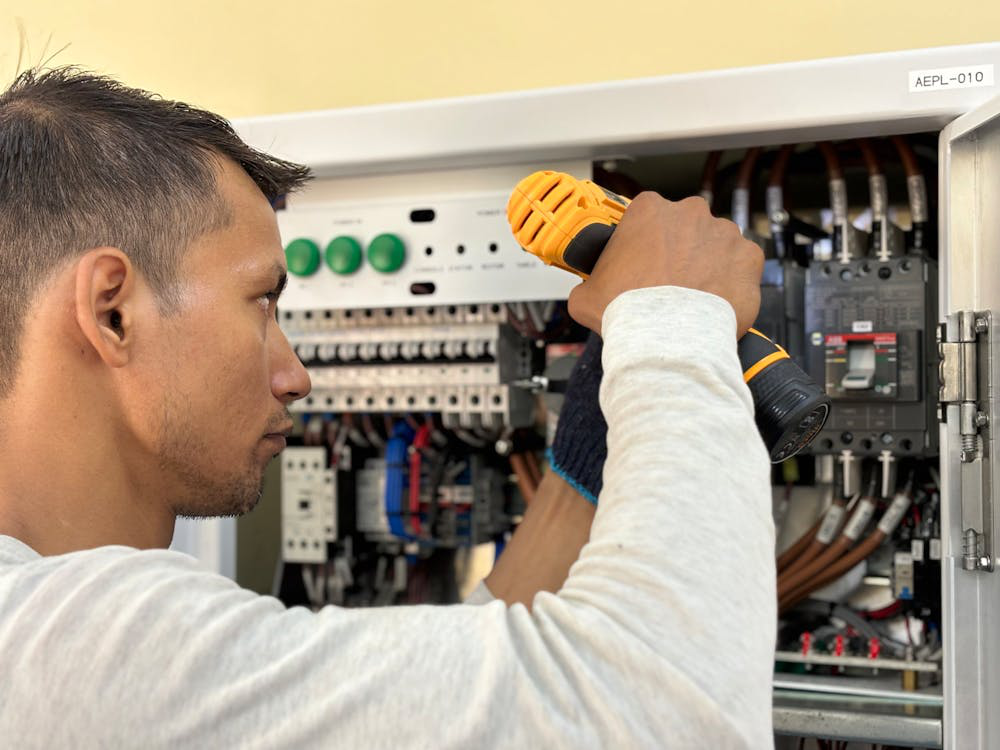If your circuit breaker trips frequently, it’s more than a nuisance—it’s your home’s way of warning you that something’s not right. Breakers are designed to protect your electrical system from overloads, short circuits, and ground faults, but consistent tripping can signal deeper issues that shouldn’t be ignored. Many homeowners turn to residential electrical contractors to troubleshoot and correct these problems before they turn into safety hazards or costly damage.
Here’s what your tripping circuit breaker might be trying to tell you.
1. Circuit Overload: Too Much Demand
One of the most common reasons a breaker trips is a simple overload. When you plug in too many high-wattage appliances on the same circuit—like a space heater, microwave, and toaster—it can exceed the circuit’s capacity. The breaker cuts off power to prevent overheating and potential fires.
Solution:
Unplug some devices and spread them across different circuits. If you consistently need more power, a licensed electrician can install a dedicated circuit or upgrade your service panel.
2. Short Circuit: A Serious Problem
Short circuits occur when a hot wire touches a neutral or another hot wire, causing a sudden surge of electricity. This is more dangerous than a basic overload and typically causes the breaker to trip immediately. You may even notice a burning smell or discoloration around outlets.
Solution:
Stop using the affected outlet or appliance immediately and call a professional. Residential electrical contractors are trained to safely locate and repair wiring faults before they pose a fire risk.
3. Ground Fault: A Hidden Danger
Ground faults happen when a hot wire comes into contact with a grounded surface (like metal or the ground wire itself). These are especially common in areas with moisture, like bathrooms or kitchens. Ground Fault Circuit Interrupters (GFCIs) are designed to detect these incidents and trip quickly to prevent shock.
Solution:
If you’re experiencing repeated ground faults, a professional inspection is critical. A qualified electrician can test for faulty wiring or damaged receptacles and replace them if necessary.
4. Outdated or Undersized Electrical Panel
In older homes, electrical panels may not be equipped to handle the demands of modern appliances and devices. If your panel hasn’t been upgraded in decades, it’s likely undersized or out of date—leading to frequent tripping when your usage exceeds its capacity.
Solution:
Have an electrician evaluate your system. Upgrading to a higher-capacity panel, such as a 200-amp service, is often the best long-term fix.
5. Faulty Appliances or Devices
Sometimes, the issue lies not with your wiring, but with the devices themselves. A malfunctioning appliance can draw excessive current or create a short, triggering the breaker repeatedly.
Solution:
Unplug the suspected appliance and see if the breaker stops tripping. If so, it may be time for a replacement—or a repair by a qualified technician.
Conclusion
A tripping breaker isn’t something you should ignore or keep resetting without addressing the root cause. It’s your home’s electrical system telling you something’s wrong—and if you don’t listen, it could lead to electrical fires or shock hazards.
That’s where experienced residential electrical contractors come in. They have the tools and expertise to identify issues quickly, offer safe solutions, and ensure your home stays protected.
Enjoy Uninterrupted Power and Peace of Mind with Mr. Prime Electrical
Trust Mr. Prime Electrical’s residential electrical contractors in San Carlos and home electricians in Burlingame for expert troubleshooting, wiring upgrades, and reliable service. We handle everything from emergency repairs to full residential electrical services—safely and efficiently. Call today!



